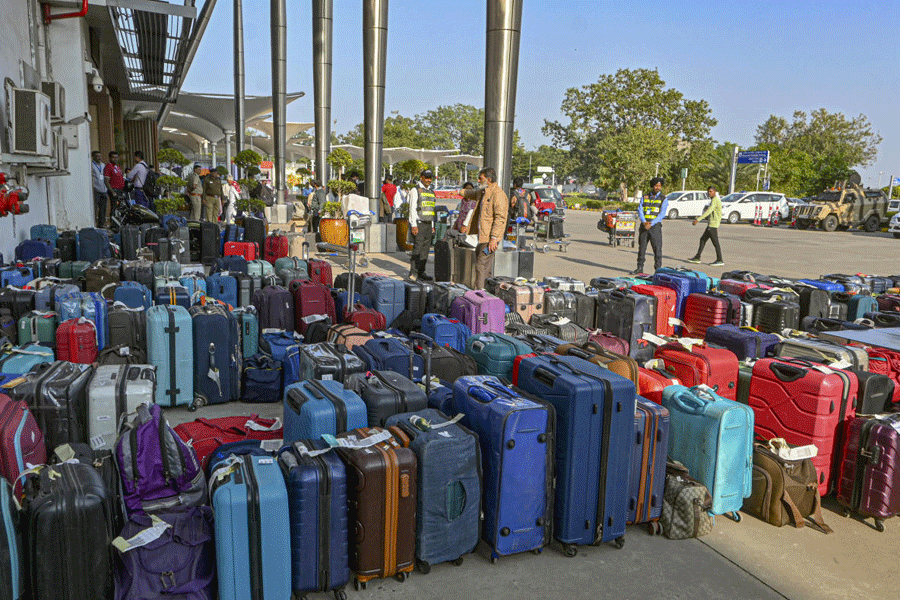We are not much into rituals, but there is one custom that we try and follow on festive occasions — we eat luchis. There was a time when I found these deep fried, fluffy flour breads too heavy, but no longer. Now that I have got used to them, I can have quite a few for breakfast with shaada aloo — potatoes favoured with onion seeds and green chillies — or for dinner with kosha mangsho, a delicious meat curry.
.jpg)
I am reminded of luchis now that the Pujas are around the corner. This is the time busy hands will be kneading dough in kitchens, making small balls, rolling them out into neat circles, and then frying them in kadais filled with hot oil. The perfect luchis will bob up to the surface of the oil like little footballs, and will then be eaten for breakfast — and for lunch, tea and dinner, in some luchi-loving homes.
“Luchi is the perfect celebratory food. On normal days, people eat their staples, rice or rotis, or other cereals. But luchis are for special occasions,” points out chef Sharad Dewan of The Park Kolkata. “There are variations in every part of the country, and these figure in every festival.”
There is, he points out, atta puri in the North and the South. The north aso relishes its bedmis with dal paste fillings, bhatureys, missi puri with besan and atta and so on. A puri variation that you don’t find very easily anymore is katlama, a large, fried bread that is often eaten with halwa.
.jpg)
In the East, too, I find that there are quite a few variations of luchis. These include red or green ones (the dough is kneaded with shredded beet or spinach, after water is drained out of the vegetable). You can have moricher luchi, or pepper-flavoured luchis, where the dough is mixed with coarsely ground pepper. “There is also luchi prepared with minced meat — or keema puri,” chef Dewan adds.
But two of the more traditional forms of luchi that you will find in many homes during this season are the koraishutir kochuri — luchis stuffed with a spicy pea paste – and radhabollobhi. To non-Bongs (and some Bongs, as I discovered a few years ago!), the latter sounds like a sweet dish, but it is actually a luchi with a dal filling, served with a potato sabzi. I recall how the economist, Amiya Bagchi, had patiently explained to a bemused Bengali Bollywood actress on the sidelines of a seminar in Delhi that radhabollobhi was not a sweet dish (as she had thought), but a savoury item.
Bengal also has its dal puri, which again has a dal filling. “But while radhabollobhi is usually stuffed with urad dal, dal puri has channa dal in it,” explains Sushanta Sengupta of 6 Ballygunge Place. The former is often tempered with ginger and fennel, and the latter with garam masala and cinnamon.
.jpg)
The chef points out that luchis are often a part of the prasad offered on Ashtami, and is served with tal kheer — a sweetened milk and palm fruit preparation. My friend, philosopher and guide, Pushpesh Pant, adds that these fried breads were traditionally served to priests conducting a puja.
“Luchis and puris are a part of religious festivals because the priests were given what was called pakka khana — or cooked food,” explains the academic-cum-food curator, who is also the author a great many food books. “Traditionally, the dough was kneaded with either ghee or mashed bananas, and never with water,” Pant says.
I have never had luchis where the dough has been kneaded with mashed banana and ghee, but there’s always a first time. And no time like the present.
Note to self: Stock up on antacids.
Photographs by Rashbehari Das;
Location courtesy The Park Kolkata

.jpg)








